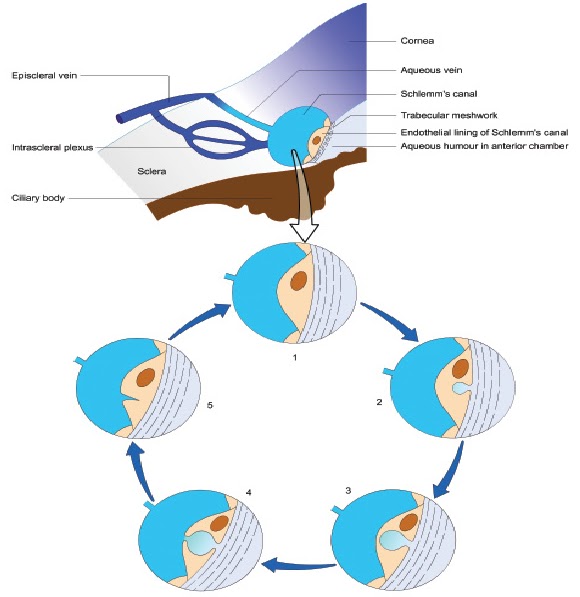Glaucoma
In this blog thread, we will be discussing first about normal physiology and anatomy of eye to make understanding clear as quick as we can, which includes anterior chamber angles and trabecular meshwork, normal aqueous humour flow, and flow of aqueous humour by schlemn's canal. Later, we will discuss deeply about the GLAUCOMA, which includes Congenital Glaucoma, Primary Glaucoma and Secondary Glaucoma. Surgeries will be discussed as closing ceremony of this blog.
Definition:
Glaucoma is a group of disorders characterized by optic neuropathy associated with visual field defects and elevated intraocular pressure.So, here is the look of what we should know about Glaucoma:-
 |
| Basics |
 |
| Classification of Glaucoma |
In this article, we will be establishing a base before we proceed to Glaucoma and its types. This will just take few minutes to understand the concept.
Anatomy of eye
The most significant structure of eye when dealing with glaucoma is the Anterior chamber angle followed by trabecular meshwork.
Angle of anterior chamber-
The mechanism of various types of glaucoma including open angle and angle closure glaucoma depends on width of this angle.
Trabecular meshwork (Trabeculum)-
It is sieve like structure through which aqueous humour passes into schlemn's canal.
These can be well-observed in the following images :-
These can be well-observed in the following images :-
 |
| Note Anterior chamber angle and Trabeculum |
 |
| Note Anterior chamber angle and Trabeculum |
The Shaffer's system grades the angle width for glaucoma as follows:-
 |
| SL, Schwalbe's line; TM, trabecular meshwork; SS, scleral spur; CBB, ciliary body band; ROI, root of iris |
Some of the configurations can be noted in eye as:-
 |
| Very narrow-angle of the anterior chambern (Grade I) |
 |
| Open-angle of the anterior chamber (Grade III) |
 |
| Wide open angle of the anterior chamber (Grade IV) a- Iris root, b- Ciliary body, c- Scleral spur, d- Trabecular meshwork |
Aqueous Humour Flow
Intraocular pressure(IOP) is determined by three factors:
1. The rate of aqueous humor production
2. Resistance to aqueous outflow across the trabeculum, especially in the juxtacanalicular meshwork, and
3. The level of episcleral venous pressure.
The Aqueous humour outflow before glaucoma is easy to understand:-
Aqueous humour, derived from plasma, is produced from ciliary process. From there, it passes to posterior chamber and then around iris to anterior chamber. From here (anterior chamber), it either drains into schlemn's canal via trabecular meshwork [Trabecular outflow] or goes back into ciliary process towards venous circulation [Uveoscleral outflow]. Trabecular outflow is conventional outflow (90%).
The initial steps are always the flow of aqueous humour from ciliary process to anterior chamber as:-
Aqueous humour in Schlemn's canal
It is a part of trabecular outflow and is best explained by vacuolation theory. The below diagram will quickly explain the steps of vacuolation theory in schlemn's canal:-
This was all about understanding the anatomy and physiology of eye. We have indeed used more images than text, to establish a strong base before we proceed to the original topic, Glaucoma.
Read back if you are confused.
Click here to proceed to Glaucoma-Open Angle Glaucoma.





